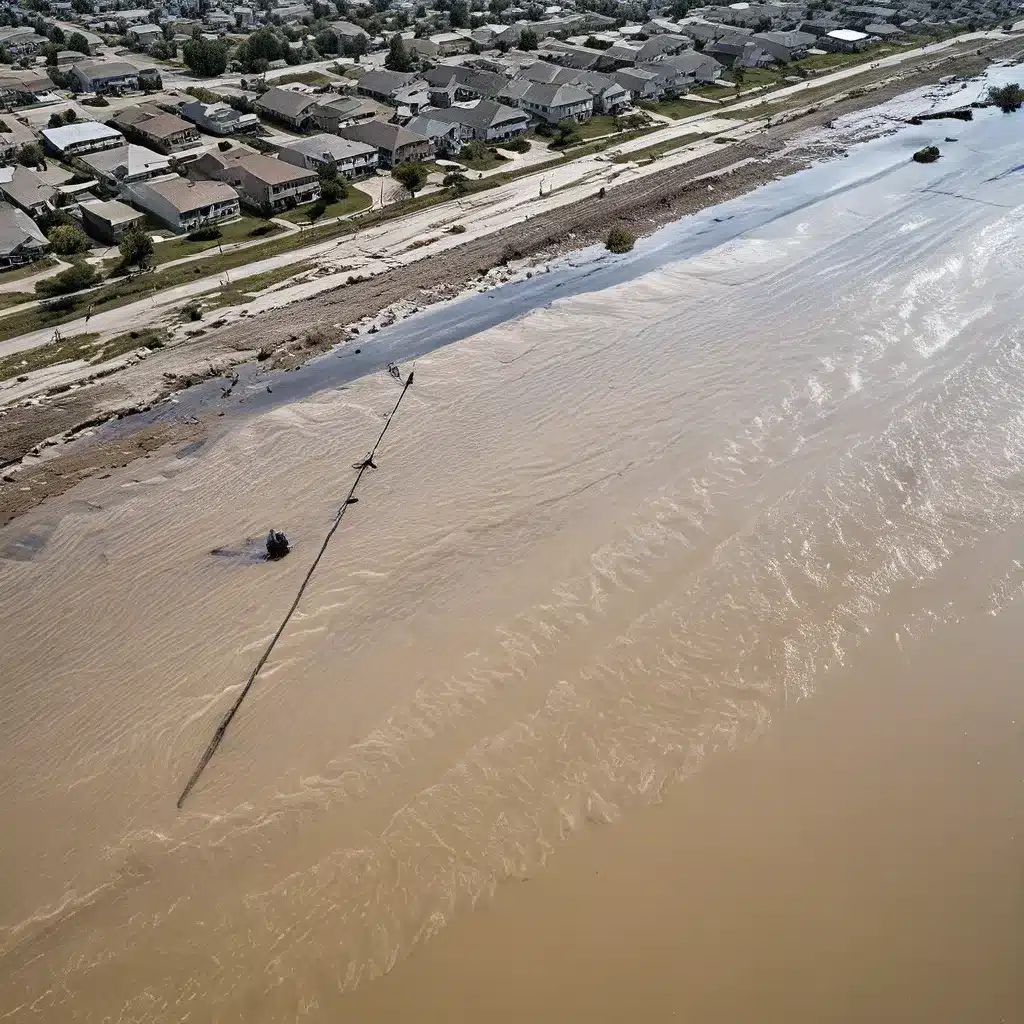
Weathering the Storm: Preparing for Water Emergencies
Imagine this: a sudden, devastating storm sweeps through your community, leaving a trail of destruction in its wake. Power lines are down, roads are impassable, and the local water treatment plant has been crippled. Suddenly, the taps run dry, and access to clean, safe drinking water becomes a pressing concern. This is the reality that far too many communities face in the wake of natural disasters.
Yet, as daunting as these scenarios may seem, I’m here to tell you that there is hope. With the right preparation and a robust emergency water response plan in place, even the most water-dependent communities can weather the storm and emerge resilient.
As a water treatment professional, I’ve seen firsthand the importance of proactive planning. It’s not enough to simply react when disaster strikes – we need to be ahead of the curve, anticipating potential threats and putting the necessary safeguards in place. That’s where comprehensive emergency water response plans come into play.
The Foundations of Resilience
Building a comprehensive emergency water response plan is no easy task, but it’s a critical investment in the long-term resilience of your community. At the core of this process is a deep understanding of the unique challenges and vulnerabilities your water system faces.
FEMA’s Building Resilient Infrastructure and Communities (BRIC) grant program has been a driving force in this space, providing crucial funding and support for communities looking to bolster their emergency preparedness. Through this initiative, states, territories, and tribes have access to resources that can help them identify and address their most pressing water-related risks.
But it’s not just about securing funding – it’s about fostering a culture of resilience within your organization and your community. This means investing in the right infrastructure, training your staff, and engaging with local stakeholders to ensure everyone is on the same page.
Anticipating the Unexpected
One of the key aspects of a comprehensive emergency water response plan is the ability to anticipate and prepare for a wide range of potential threats. This could include everything from natural disasters like floods and hurricanes to human-caused events like chemical spills or cyberattacks.
Resilience Wisconsin, a state-level initiative, highlights the importance of building resilience at the individual, community, and organizational levels. By understanding the factors that can shape our well-being and developing strategies to overcome adversity, we can better position ourselves to withstand and bounce back from even the most daunting challenges.
One of the key elements of resilience is the ability to anticipate and adapt to changing circumstances. This means conducting comprehensive risk assessments, identifying potential vulnerabilities, and developing contingency plans that can be quickly activated in the event of an emergency.
Forging Resilient Partnerships
Of course, no water treatment organization can tackle these challenges alone. That’s why forging resilient partnerships is essential to the success of any emergency water response plan.
By collaborating with local emergency management agencies, public health officials, and community organizations, water treatment providers can tap into a wealth of knowledge, resources, and support. This could include everything from coordinating emergency response protocols to securing backup power sources and distribution networks.
FEMA’s BRIC program has been instrumental in fostering these types of partnerships, with a focus on ensuring that critical infrastructure projects are designed to withstand the impacts of natural disasters and other emergencies.
Cultivating a Culture of Preparedness
But building a comprehensive emergency water response plan is not just about the practical aspects – it’s also about cultivating a culture of preparedness within your organization and your community.
This means investing in ongoing training and education for your staff, empowering them to identify potential issues and respond quickly and effectively. It also means engaging with the broader community, raising awareness about the importance of water resilience and equipping residents with the knowledge and resources they need to weather any storm.
As the saying goes, “an ounce of prevention is worth a pound of cure.” By taking a proactive and collaborative approach to emergency water response planning, you’re not just safeguarding your community’s access to clean, safe water – you’re also fostering a sense of resilience and self-reliance that can pay dividends for years to come.
Navigating the Uncharted Waters of the Future
Of course, the challenges we face when it comes to emergency water response planning are not static – they’re constantly evolving. As the effects of climate change become more pronounced and the threat of natural disasters grows, we’ll need to be nimble, adaptable, and always one step ahead.
That’s why it’s so important to stay informed, to keep exploring the latest research and best practices, and to remain open to new and innovative solutions. Whether it’s leveraging cutting-edge technology, exploring alternative water sources, or forging even stronger community partnerships, the key is to always be on the lookout for ways to strengthen your emergency water response capabilities.
After all, the stakes are high. When disaster strikes, access to clean, safe water can mean the difference between survival and tragedy. But with the right preparation and a steadfast commitment to resilience, I believe we can navigate even the most turbulent waters and emerge stronger than ever.
So, let’s get to work. Let’s forge a future where every community, no matter the challenge, can count on a resilient and responsive water system – one that can weather any storm and keep the taps flowing, even in the darkest of times. Because when it comes to water security, there’s simply no room for compromise.
If you’re ready to dive into the journey of building a comprehensive emergency water response plan for your community, I encourage you to connect with Inland Waters – a trusted partner in the world of water treatment and environmental services. Together, we can navigate these uncharted waters and build a more resilient future, one ripple at a time.


